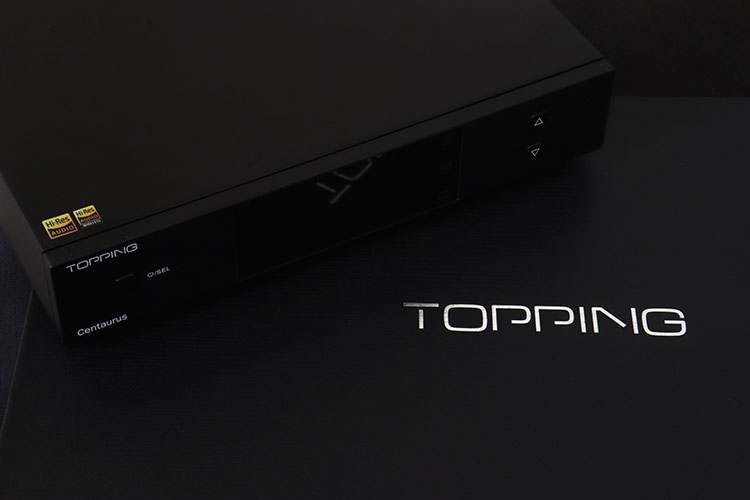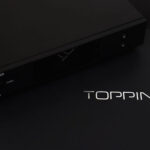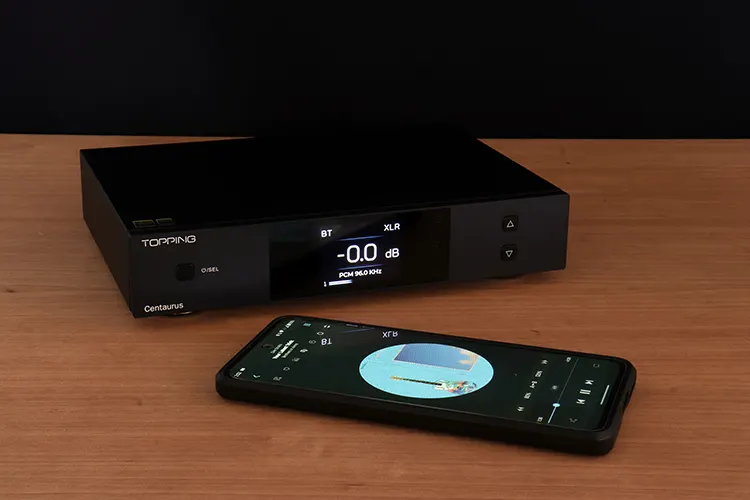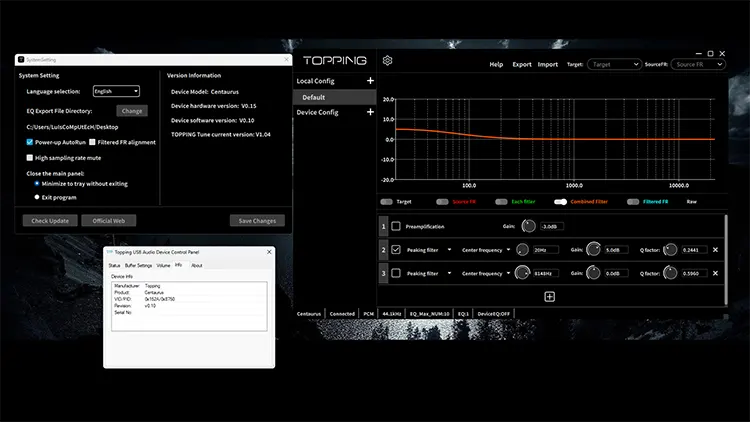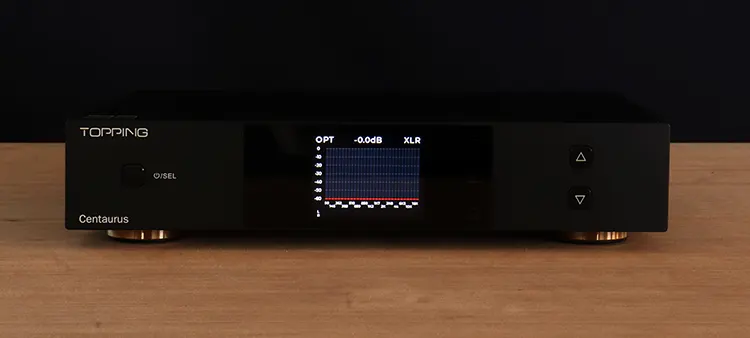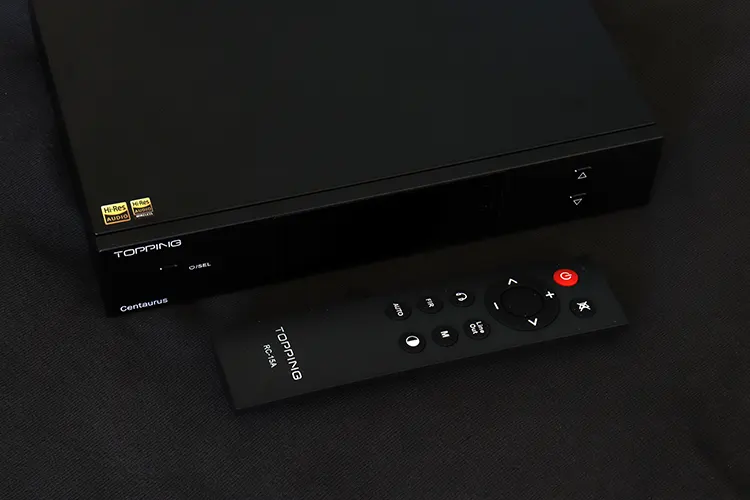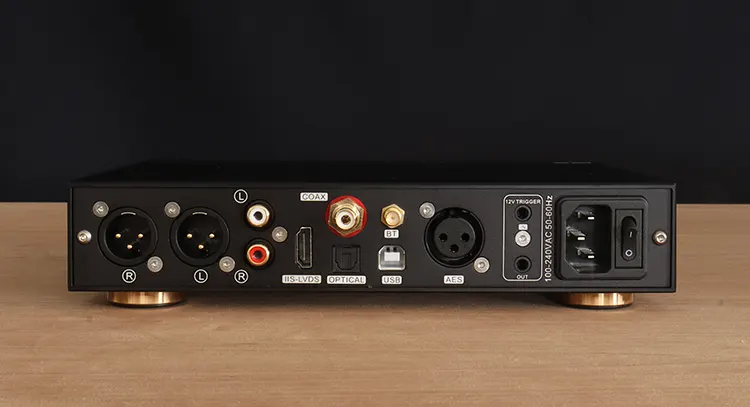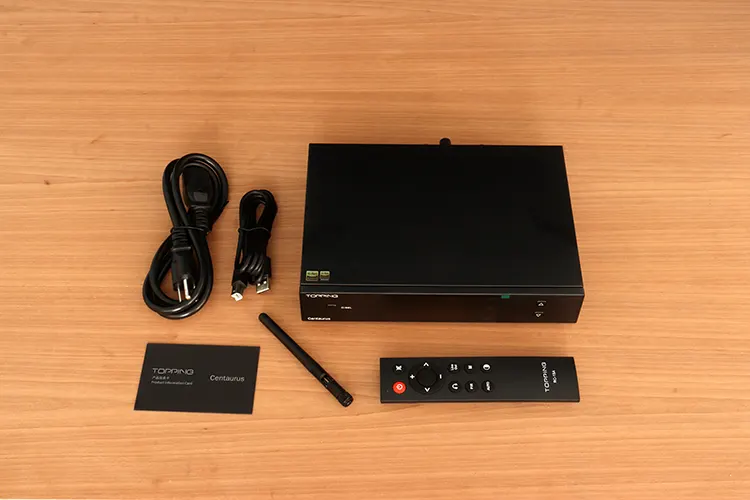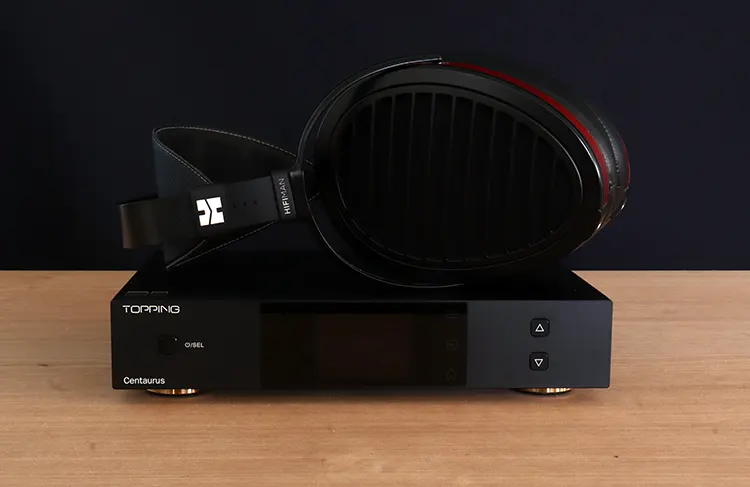In this feature, Louis reviews the Topping Centaurus, a high-end, fully balanced desktop R2R DAC capable of up to DSD512 and Bluetooth LDAC support. It is currently priced at $849.15 with an SRP of $999.
Disclaimer: This sample unit was sent to me in exchange for my honest opinion. Headfonics is an independent website with no affiliate links or status. We thank the team at Topping for supporting us.
Click here to read more about the Topping products we have previously reviewed on Headfonics.
Note that this article follows our current scoring guidelines, which you can read in more detail here.
The Centaurus is Topping’s recent full-featured desktop DAC designed in partnership with Holo Audio.
It offers a fully-featured remote control, a color display, and lots of customization features, including a highly flexible 10-band parametric equalizer.
But even more important is that this is Topping’s debut R2R DAC model, hence the Holo Audio partnership. It also takes the TOTL title in their DAC lineup at present.
R2R DACs are sought after nowadays by many, including many of my audiophile friends. The R2R architecture is becoming more and more commonplace today.
For example, the budget-level FiiO K11 R2R and upscale offerings from Musician Audio with the Aquarius, HIFIMAN’s Serenade, the EF400, the EF600, the EF500, and, of course, Holo Audio’s own DAC models.
Features
The major feature is the fully balanced, eight-stage R2R architecture DAC section developed in collaboration with Holo Audio exclusively for the Centaurus. This DAC design is composed of an eight-resistor array network.
Another important feature is the ten-band high-precision PEQ built into the unit for those who like to tweak away. This feature can be accessed via a Windows app or the built-in screen, but it’s way easier to operate on the downloadable Windows app.
The Centaurus offers a hefty level of customization behind a 2-inch full-color display with an Aurora UI interface that adorns the center of the front panel. This display also has three touch buttons to access some of its onboard features.
The Centaurus has a generous number of IO ports on the rear panel to tap into, including a 12-volt trigger that, when paired with some of Topping’s amplifiers, like the A70 Pro, synchronizes and simplifies the on-and-off process.
DAC
The Centaurus DAC decoding is a maximum of 32-bit/768k and DSD512 from its USB and ISS ports, and 192k from the coaxial and optical inputs.
You can also set bitrates within the Thesycon ASIO driver for Windows users once you install the downloaded file, which is available on the Topping website.
The Vector Step Resistance Network array DAC works has four networks dedicated to DSD decoding, and another four for handling PCM decoding, all powered by an Altera Max 2 CPLD.
There’s also a 3-mode switch. The three available options are NOS, which bypasses oversampling, an OS option that applies oversampling, and an auto mode, which allows the DAC to select the optimal setting for you, which is the one I choose whenever I use the Centaurus.
Bluetooth
Topping threw in a QCC5125 5.1 Bluetooth solution to handle wireless capabilities up to LDAC 24-bit, 96 kHz, with decent stability and range capability.
My unit paired quickly and easily with my Motorola Edge, and connections were stable. Once paired, it automatically selected the LDAC codec, which is my preferred Bluetooth codec, but of course, the Bluetooth section plays along with other codecs just fine.
The Centaurus wireless capability also handles SBC, AAC, and all the aptX codecs, including HD, Adaptive, and aptX.
Design
The Topping Centaurus design can be described as minimalistic, sporting three visible buttons upfront and a full-color 2-inch screen placed dead center up front with an additional three touch control buttons that are not so visible to the naked eye and should have been backlit.
The chassis is rectangular with sharply defined corners, but being a desktop model, that design aspect can help it blend with many other models. Topping gives the buyer a choice of two color schemes, black and silver. It’s a hefty box made from aluminum.
The Centaurus also comes with three types of home page screens to choose from. My favorite, hands down, is the analog meter. The Centaurus seems to like things in groups of threes. It even has three digital audio inputs.
Besides the three types of home screens, you also get a choice of nine colors, selectable from within the system menu. The only aspect I don’t like is that the black version is a fingerprint magnet, but not the silver version.
Controls
The most important switch that the Topping Centaurus has is a touch button, and it’s the top touch button that takes you to a menu screen where all the features are located. Below that touch switch is the input selector, followed by the home button at the bottom.
The power standby button doubles up on duties and also selects the output port you want to use. It also selects the options on the menu screen.
The two buttons on the right control the gain or valve since the volume tops out at 0 decibels of gain. These buttons also scroll up or down once you’re within the system options menu.
The options menu seems to be separated into three sections. There it is again. It’s broken down into seven appearance settings, four EQ settings, and an advanced options section, which contains thirteen other options. The Centaurus has plenty of features within those menus.
Remote Control
The Centaurus comes with Topping’s RC-15A, which I’ve seen before on the D90, only it’s labeled BC-15A instead of RC-15A. I have a feeling it’s the same remote with different codes. The RC-15A remote uses a pair of AAA batteries that are not included, by the way.
One of the features on the remote control that is an overlooked convenience and not on the main unit is the mute button. However, the most convenient feature is that it puts that menu at your fingertips.
The menu lets you set the EQ, set the channel balance, choose output power levels, and play with the display settings on top of being able to adjust the display’s backlight intensity level, plus many other tweaks.
I/O
All the IO resides on the back panel. All the IO requirements and adjustments can be made and selected from the front panel or via the remote control.
The USB input makes up part of the input array and is handled by the XMOOS XU316. This chip has become a favorite amongst DAC makers and is common fare nowadays for its high bit rate capability.
The other input ports consist of a coaxial input and an optical in port that seems to share specifications. The other inputs are via the IIS port, which I’m still exploring.
The output section consists of a set of RCA jacks and a pair of three-pin XLR connectors if you want to go balanced. These two have a 4-volt or a 5-volt selectable output that can be set within the screen’s menu. The RCA out also has 2-volt and 2.5-volt output selectable options.
The Centaurus does have a variable or fixed preamp output mode, plus you can select either output to work singularly or you can use them both simultaneously, depending on your particular setup.
Packaging & Accessories
The box that the Topping Centaurus came in seems so familiar to me and is typical Topping packaging, which is of high standards in my opinion. The box is made from hard cardboard with a custom foam mold that holds the Centaurus in its place during transit.
Inside you’ll find the Centaurus, the remote control, an SMA interface Bluetooth antenna, the power cord, a USB cable, and a product information card.
Sound Impressions
My test bench setup was a simple one. I started with the Topping A90 NFCA module-equipped amplifier, but that’s a discontinued model.
I decided that since the Centaurus has an analog aura around its sonic signature, I would pair it with the SMSL SH-X, an analog, fully balanced amplifier, ideally to create a correlative sonic experience.
I used the HIFIMAN Arya Organic, the HE1000 Unveiled, and some IEMs like the Grand ORIVETI Supremacy, along with FiiO’s FX17 as headgear and the HIFIMAN Svanar.
Summary
The Topping Centaurus has some fluidity in its sonic presentation, which is my single-word description of an antithesis to the ultra-clean sounding modern-day all-digital DACs.
There’s an absence of digital jaggedness in its overall and final product, and music seems to flow in a circumfluent manner.
The overall frequency response is well extended both ways, and the overall presentation of the curve is neutral. But if you’re not feeling it, you can always use that advanced PEQ to sculpt that curve to your preference and spice things up.
In general, the overall sound is clean, precise, highly detailed, neutral, and transparent. You get what goes in basically, in a natural and uncolored manner.
It’s a refinement of the Topping house signature since this DAC has many refinements within the overall sonic performance compared to other Topping DACs. It’s Topping, renovated and improved.
Before this, all the Topping DACs sounded fully digital. However, the Centaurus has an aspect about its sound that combines digital prowess with the smoother character of analog.
Timbre
The bass response is produced richly and fully. It does tend to be a touch lean, but it doesn’t veer away from not being a harmonious experience since the Centaurus can extract those deep notes that are the fundamental base of some tracks.
The bottom end is powerful but controlled. It doesn’t emphasize any area of the bass response that caters to speed and tightness, and is free of boominess and looseness.
The midrange is produced neutrally. Transparency, revelation, and a natural intonation are some of the highlights. Accuracy is another strong point, but since it has a touch of warmth, it’s not sterile-sounding.
The Centaurus is well-mannered, but it doesn’t sound emotionally inhibited. Resolution is not its forte, but it makes up for it by producing pinpoint accuracy within the soundstage, especially around the midrange and high frequencies.
The high frequencies are sharp, airy, and very well-defined. They’re produced with crystallinity in front of a dark background, free from hiss and flow with the rest of the music.
Staging & Dynamics
A strong point of the Topping Centaurus is the precision and focus of the soundstage it produces. The aura smear around elements within recordings has been reduced, and elements seem more focused, better contained, and easier to pinpoint.
To my ears, Topping gear is not ultra-wide sounding, and they seem to tune their gear with what I call a realistic, plausibly sized soundstage that attempts to cater to precision over a large-sized soundstage, but the Centaurus takes it further and combines the two characteristics.
The Centaurus presents the listener with a well-focused and undiluted positioning and placement that makes it easier to gather information on sources and locations.
Click on page 2 below for my recommended pairings and selected comparisons.

